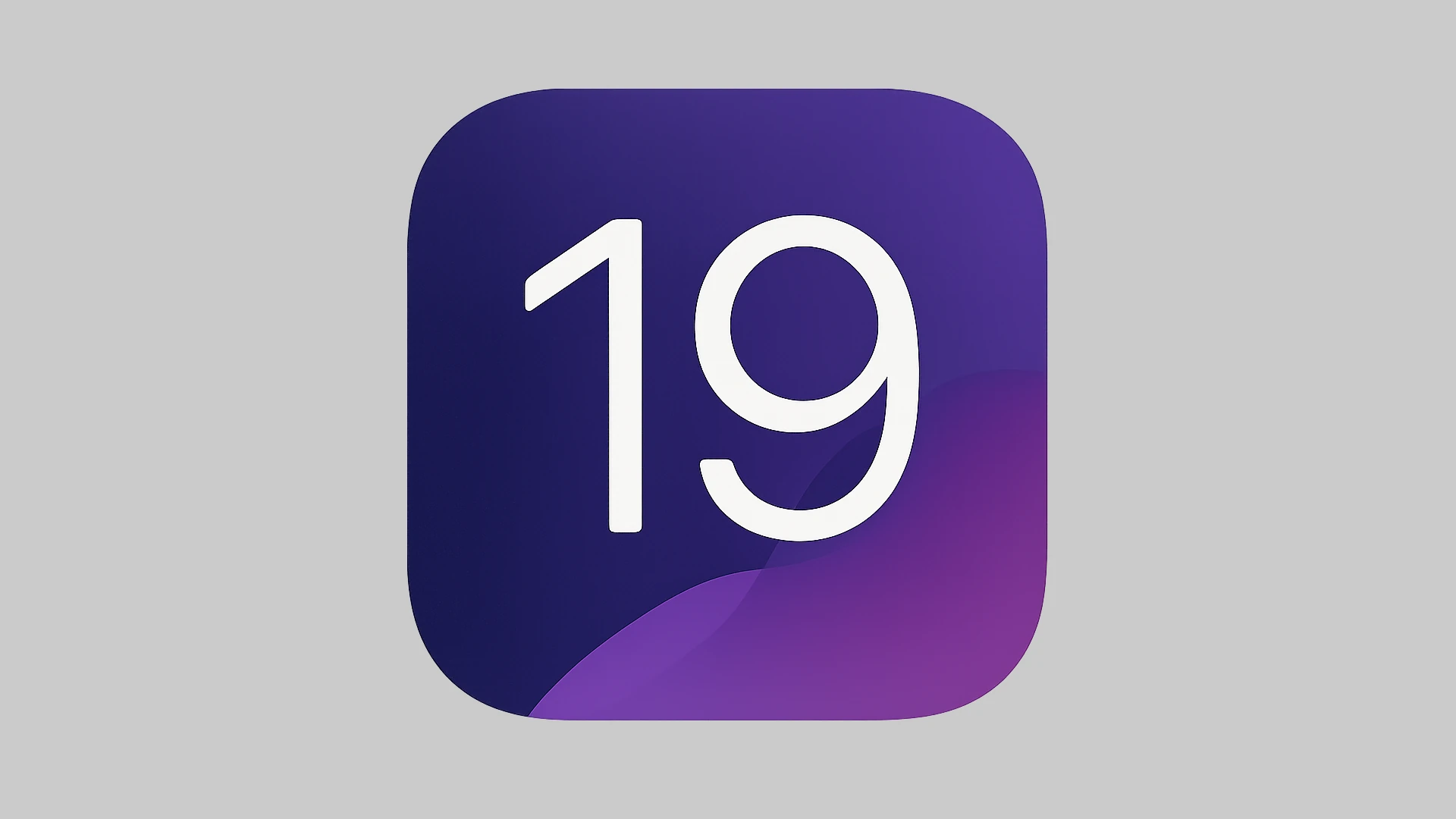Apple has revealed the list of devices that will support iOS 19, and some older iPhones won’t make the cut. The upcoming iOS 19 update will drop support for iPhone XR, iPhone XS, and iPhone XS Max models when it launches later this year. These devices all use the A12 Bionic chip, which appears to be the cutoff point for the new operating system requirements.
This change means users with these older models will need to upgrade their devices to continue receiving the latest features and security updates. The iOS 19 compatibility list now starts with the iPhone 11 series and newer models, including all devices released since then. Apple is expected to officially announce these details at WWDC 2025 in June.
If you’re using one of the affected models, now might be a good time to plan your next iPhone purchase. The iPhone XR, XS, and XS Max were released in 2018, meaning they will have received about seven years of software support by the time iOS 19 launches this fall.
Which iPhones Will Support iOS 19?
Apple’s upcoming iOS 19 update is generating buzz, not only for its rumored features but also for the shift in which devices will be eligible to receive it. With the Worldwide Developers Conference (WWDC) 2025 just around the corner, leaks and credible reports are painting a clear picture of the supported devices—and which ones will be left behind.
Let’s break down the complete list of iPhones expected to support iOS 19 and which models are reportedly being dropped for the first time since iOS 16.

iPhones Expected to Support iOS 19
If your iPhone runs on the A13 Bionic chip or newer, you’re likely in the clear. Here’s a full list of supported iPhones based on current reports:
| iPhone Model | Release Year | Chip |
|---|---|---|
| iPhone SE (2nd gen) | 2020 | A13 Bionic |
| iPhone SE (3rd gen) | 2022 | A15 Bionic |
| iPhone 11 | 2019 | A13 Bionic |
| iPhone 11 Pro / Pro Max | 2019 | A13 Bionic |
| iPhone 12 / 12 mini | 2020 | A14 Bionic |
| iPhone 12 Pro / Pro Max | 2020 | A14 Bionic |
| iPhone 13 / 13 mini | 2021 | A15 Bionic |
| iPhone 13 Pro / Pro Max | 2021 | A15 Bionic |
| iPhone 14 / 14 Plus | 2022 | A15 Bionic |
| iPhone 14 Pro / Pro Max | 2022 | A16 Bionic |
| iPhone 15 / 15 Plus | 2023 | A16 Bionic |
| iPhone 15 Pro / Pro Max | 2023 | A17 Pro |
| iPhone 16 / 16 Plus | 2024 | A18 |
| iPhone 16 Pro / Pro Max | 2024 | A18 Pro |
| iPhone 16e | 2025 | A18 |
If your device falls within this list, you can expect to get iOS 19 later this year—likely in September after the WWDC beta period wraps up.
iPhones Reportedly Losing Support With iOS 19
This year marks a notable shift in Apple’s support lifecycle. For the first time since 2018, the following devices are expected to not receive the next major iOS update:
- iPhone XR
- iPhone XS
- iPhone XS Max
All three of these models feature the A12 Bionic chip, which will be officially retired from the iOS update cycle if these reports hold true. It’s worth pointing out that the A12 Bionic has had a solid run—it supported iOS versions 12 through 18.
While these iPhones may not get iOS 19, they’ll likely still receive security updates and minor patches for at least another year, similar to how Apple handled the iPhone 8 and iPhone X after they were dropped from iOS 18.
Why the iPhone XR and XS Models Might Be Dropped
Apple’s iOS updates are heavily optimized around Neural Engine performance, efficiency improvements, and new AI-driven features. The A12 chip, while powerful in its day, lacks the bandwidth and Neural Engine capabilities needed to run features expected in iOS 19—particularly Apple Intelligence, which will likely require the A15 chip or newer.
In short, the newer iOS builds are becoming more tightly integrated with Apple’s hardware advancements, which naturally means older devices get phased out faster.
Expected Focus of iOS 19
iOS 19 is expected to focus on:
- Deeper AI integration (powered by Apple Intelligence)
- Smarter Siri with contextual awareness
- Enhanced privacy protections
- More customizations in Control Center and Lock Screen
- AI-generated suggested replies and app interactions
Many of these features will rely on the power of the newer A15, A16, and A17 chips—especially when it comes to running machine learning and generative AI tasks locally.
Here’s a quick look at AI-readiness by chip:
| Chip | AI-Ready for iOS 19 Features? |
|---|---|
| A12 Bionic | ❌ Likely Dropped |
| A13 Bionic | ⚠️ Partial Support |
| A14 Bionic | ✅ Likely Supported |
| A15 Bionic+ | ✅ Full Support (with AI) |
| A16 Bionic+ | ✅ Full Support (with AI) |
| A17 Pro | ✅ Full Support |
| A18 Series | ✅ Optimized for AI Workloads |
When Will iOS 19 Be Released?
iOS 19 will be announced at WWDC 2025 on June 9, with the first developer beta launching shortly afterward. A public beta will likely be available in July 2025, with the full rollout to eligible devices expected in September 2025—just ahead of the iPhone 17 launch.
As always, Apple could surprise us with last-minute changes to the support list, but the A12-based devices are looking increasingly unlikely to make the cut.
Key Takeaways
- iOS 19 will no longer support iPhone XR, XS, and XS Max models.
- All iPhones with A13 Bionic chips or newer (iPhone 11 and later) will be compatible with iOS 19.
- Apple will likely announce official iOS 19 details and features at WWDC in June 2025.
iOS 19 Compatibility and Supported Devices
Apple has updated its device support list for iOS 19, removing several older models. The new compatibility changes focus on devices with newer processors, leaving some popular phones behind.
Devices No Longer Supported
According to recent reports, iOS 19 will drop support for three iPhone models: iPhone XR, iPhone XS, and iPhone XS Max. These devices all use the A12 Bionic chip, which appears to be the cutoff point for the new update.
This marks a significant change from iOS 18, which still supported these 2018-released phones. Users with these models will need to stick with iOS 18 for security updates.
The decision to drop A12 processor support follows Apple’s pattern of phasing out older hardware every few years. This helps ensure newer iOS features run smoothly on supported devices.
Current Supported iPhone Models
The iOS 19 compatibility list now starts with the iPhone 11 series. Here’s the complete list of supported iPhones:
- iPhone 11, 11 Pro, and 11 Pro Max
- iPhone 12, 12 mini, 12 Pro, and 12 Pro Max
- iPhone 13, 13 mini, 13 Pro, and 13 Pro Max
- iPhone 14, 14 Plus, 14 Pro, and 14 Pro Max
- iPhone 15, 15 Plus, 15 Pro, and 15 Pro Max
- iPhone SE (2nd generation and newer)
All these devices contain A13 Bionic chips or newer processors. The A13 is now the minimum requirement for running iOS 19.
This update ensures that all supported devices have enough processing power to handle new features coming in iOS 19. Apple typically provides software updates for 5-6 years after a phone’s release.
Update Features and Enhancements
iOS 19 brings significant improvements focused on security, performance, and new capabilities. Apple is balancing innovative features with system stability while collecting user feedback through their beta program.
Security and Stability Focus
iOS 19 places strong emphasis on enhancing device security and system stability. Apple has rebuilt several core components to address vulnerabilities found in previous versions.
The update includes improved encryption protocols for Messages and FaceTime, making communication more secure. Users will notice better protection against malware through enhanced Lockdown Mode settings.
Battery performance receives attention with optimized background processes that reduce unnecessary drain. Many users with older supported devices like the iPhone 11 will benefit from these efficiency improvements.
Apple has also redesigned the permissions system, giving users more granular control over which apps can access sensitive information. This includes new one-time permission options for location, camera, and microphone access.
The update patches over 45 security vulnerabilities identified since iOS 18.5, making this a critical update for all compatible devices.
Anticipated Enhancements
iOS 19 is expected to introduce several exciting new features at WWDC 2025. The most significant addition is the expanded Apple Intelligence system.
Apple Intelligence will bring more personalized experiences across the operating system. This includes smarter Siri responses, contextual suggestions, and predictive typing enhancements.
The Control Center is getting a complete redesign with customizable modules and improved smart home controls. Users can now create multiple pages of controls based on their specific needs.
Camera improvements include:
- Enhanced night mode processing
- New cinematic video effects
- AI-powered photo editing tools
- Improved depth sensing for portrait mode
The Files app will support ZIP and RAR compression natively, along with better integration with cloud storage services. iPad users will enjoy similar upgrades with iPadOS 19 featuring enhanced multitasking capabilities.
Public Beta Availability and Feedback
The iOS 19 public beta program is scheduled to begin in July 2025, following Apple’s annual WWDC keynote. This testing phase is crucial for identifying bugs before the final release.
Apple encourages users to participate in beta testing through their Beta Software Program website. Testers can submit feedback directly through the Feedback Assistant app included with beta versions.
Early beta testers should be aware of potential issues including:
- Battery drain
- App compatibility problems
- Occasional system crashes
- Higher device temperatures
The iOS 19 Superguide will be available for beta participants, providing detailed information about new features and known issues. Apple typically releases 6-8 beta versions before the final public release.
Based on previous release patterns, the final version will likely launch in September 2025 alongside new iPhone models. Users can install the public beta on their devices while still having the option to revert to iOS 18 if needed.
Frequently Asked Questions
Apple’s iOS 19 update brings significant changes to device compatibility. Several older iPhone models will no longer receive the latest operating system features and security updates.
What models are included in the iOS 19 supported devices list?
According to recent reports, iOS 19 will be compatible with iPhone 11 and newer models. This includes the iPhone 11, iPhone 11 Pro, iPhone 11 Pro Max, iPhone SE (2nd generation and later), iPhone 12 series, iPhone 13 series, iPhone 14 series, and iPhone 15 series.
Any device with an A13 Bionic chip or newer will support iOS 19.
Has support for iPhone XR been discontinued with the iOS 19 update?
Yes, the iPhone XR will not be compatible with iOS 19. Multiple sources confirm that Apple is dropping support for this device in the upcoming update.
The iPhone XR features the A12 Bionic chip, which appears to be the cutoff point for iOS 19 compatibility.
Is the iPhone XS Max eligible for the iOS 19 update?
No, the iPhone XS Max will not receive the iOS 19 update. Along with the standard iPhone XS and iPhone XR, the XS Max will be excluded from the latest iOS version.
All three models use the A12 Bionic processor, which seems to be the determining factor in this support decision.
Until which iOS version will the iPhone XS Max be supported?
The iPhone XS Max will receive support up to iOS 18. This means iOS 18 will be the final major operating system update for the iPhone XS Max, iPhone XS, and iPhone XR.
Users of these devices can continue using iOS 18 with security updates from Apple even after iOS 19 is released.
What is the expected release date for iOS 19?
iOS 19 is expected to be announced at Apple’s Worldwide Developers Conference (WWDC) in June 2025. The public release will likely occur in September 2025, following Apple’s typical release schedule.
Beta versions for developers and public testers will become available shortly after WWDC.
Does the discontinuation of support for certain models impact the availability of future iOS updates?
While the iPhone XR, XS, and XS Max won’t receive iOS 19, Apple will continue providing security updates for these devices. These updates address important security vulnerabilities without adding new features.
This approach helps maintain device security even after major iOS version support ends. Apple typically provides security updates for several years after a device reaches the end of major iOS update support.







